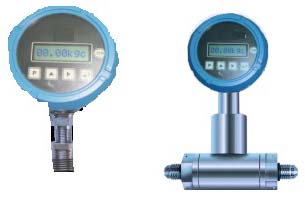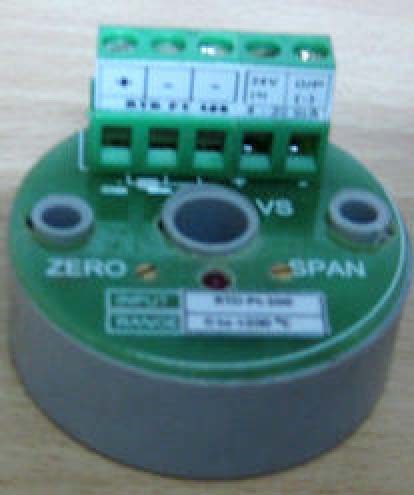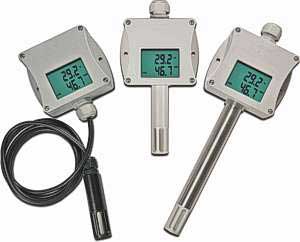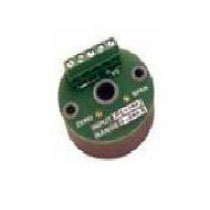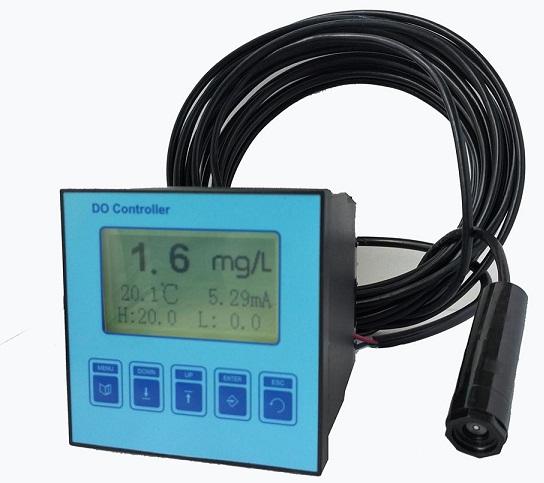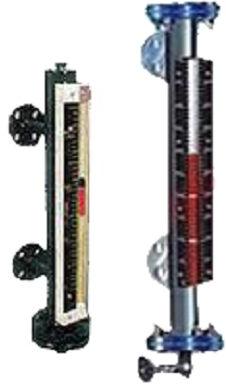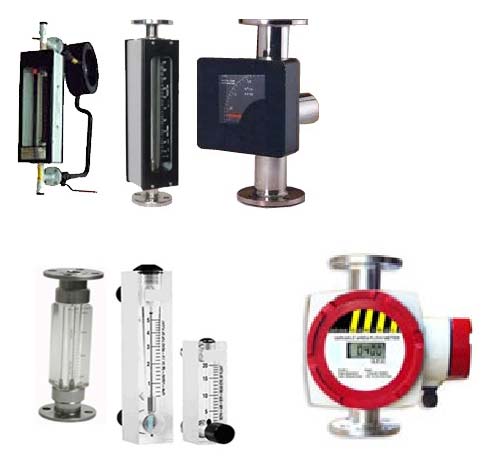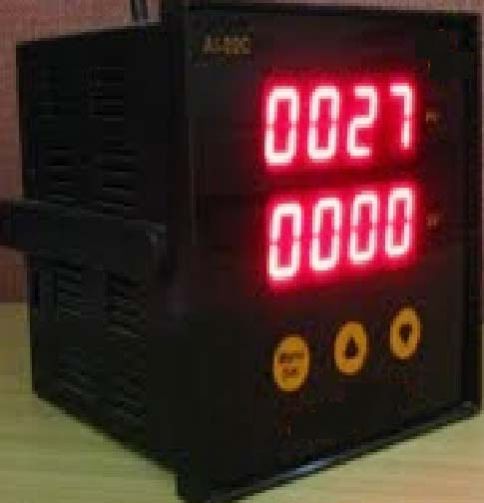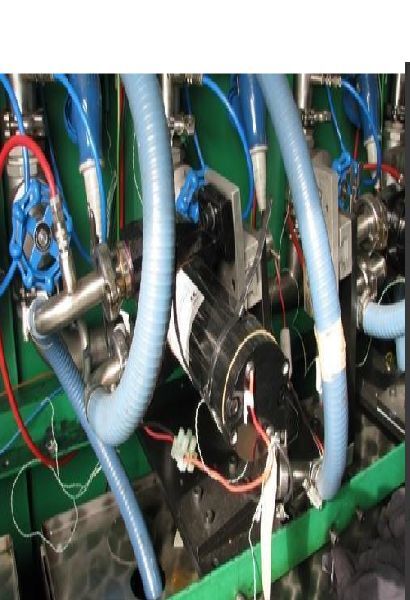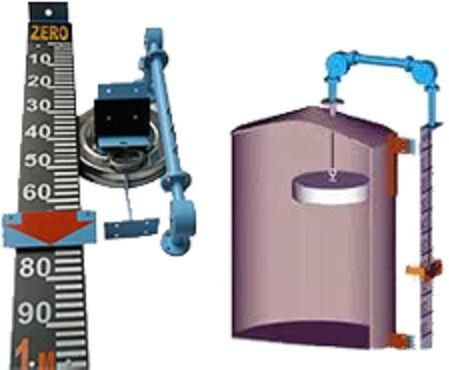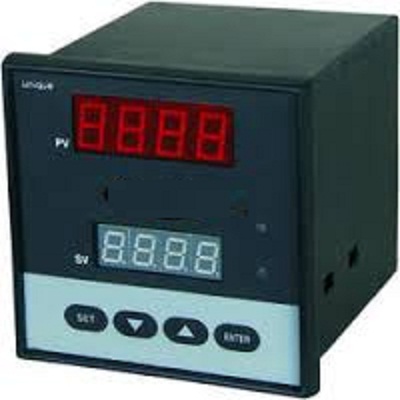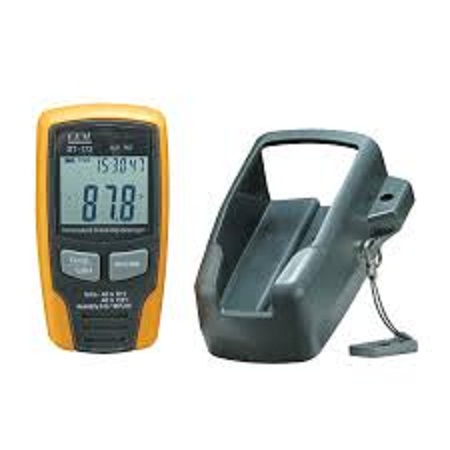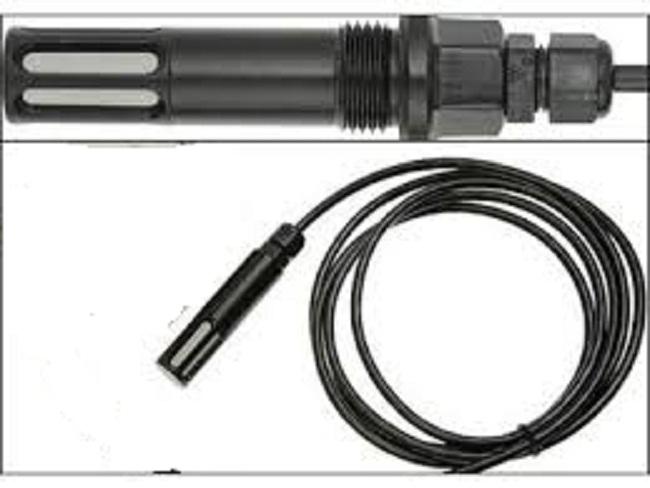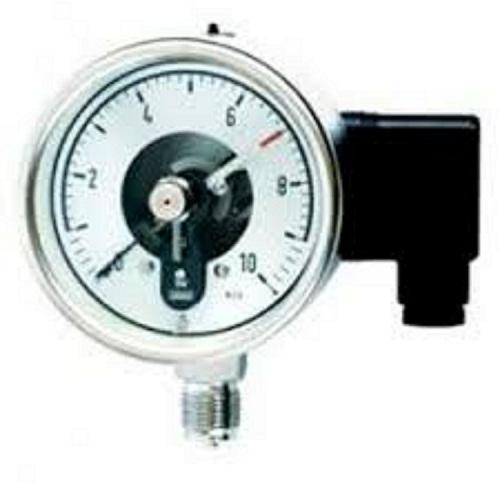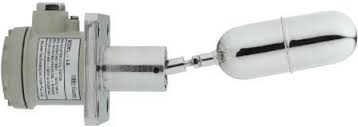Instrumentation and control Packages
Leading Manufacturers, Exporters, Wholesaler of Pressure Transmitters, Temperature Transmitter, Online Analyzer, Side Mounted Magnetic Level Indicator, Rota Meter, Digital Panel Instruments, Diesel Test Benches, Float and Board Type Level Indicator, Humidity Controller, Humidity Data Logger, Humidity Transmitters, Dial Type Pressure Switch, Level Switches and Process Control Instruments from Ahmedabad.
| Business Type | Manufacturer, Exporter, Supplier |
| Material | Metal |
| Color | Blue |
| Display Type | Digital |
| Type | Digital Pressure Gauge |
Digital pressure gauges, compared to their analog counterparts with dials and needles, offer a digital display for pressure readings and often come with additional features. Here's a breakdown of their typical specifications.
General Specifications
· Pressure Range: The range of pressure the gauge can measure, similar to other pressure transmitters (e.g., from fractions of psi to thousands of psi).
· Accuracy: Expressed as a percentage of full scale (%FS). Typical accuracy for good quality gauges is ±0.1%FS to ±0.5%FS.
· Display: Digital gauges provide a clear and easy-to-read digital readout of the pressure measurement.
· Pressure Units: They can often display pressure readings in various engineering units like psi, kPa, bar, mmHg, and more.
Performance Specifications
· Temperature Limits: The operating temperature range the gauge can withstand.
· Proof Pressure: The maximum pressure it can handle without permanent damage (typically 1.5 to 2 times the upper pressure range limit).
· Burst Pressure: The pressure that will cause catastrophic failure (typically 4 times the upper pressure range limit).
· Response Time: The time it takes for the display to update in response to a pressure change (usually faster than analog gauges, in milliseconds).
Additional Features
· Data Logging (Optional): Some gauges can store pressure data internally or on an external memory card for later analysis.
· Min/Max Recording: Some models can track and display the minimum and maximum pressure readings recorded during use.
· Calibration: Calibration is necessary to ensure accuracy. Some gauges offer features like user-friendly calibration routines.
· Battery Life: Battery-powered gauges typically specify their operating life on a single battery charge.
· Auto-Shutoff: A power-saving feature that automatically turns off the gauge after a period of inactivity.
· Backlight: A feature for improved visibility in low-light conditions.
· Enclosure Rating (IP rating): Indicates the level of protection against dust and water ingress (e.g., IP54 for dust resistance and splash water protection).
Factors to Consider When Selecting a Digital Pressure Gauge
· Pressure Range: Choose a gauge with a range that comfortably covers the pressure you intend to measure.
· Accuracy: Select a gauge with accuracy that meets your application's requirements.
· Features: Consider additional features like data logging, min/max recording, or backlight based on your needs.
· Environmental Conditions: Choose an enclosure rating suitable for the dust and moisture levels in your application environment.
· Portability: If portability is important, consider the size and weight of the gauge.
By understanding these specifications and factors, you can select a digital pressure gauge that offers the right combination of features, accuracy, and usability for your specific pressure measurement needs.
| Business Type | Manufacturer, Exporter, Supplier |
| Color | Green |
| Condition | New |
| Automatic Grade | Automatic |
| Power Source | Electric |
| Application | Industrial Automation |
| Style | Head Mounted |
| Certification | CE Certified |
| Type | Temperature Transmitters |
| Country of Origin | India |
| Product Code | Temperature Transmit |
| Payment Terms | T/T |
| Packaging Details | Any |
Temperature transmitters are workhorses in industrial process control and automation. They convert the signal from temperature sensors (like Resistance Temperature Detectors (RTDs) or thermocouples) into a standard electrical signal, typically a 4-20mA current loop. This allows for accurate and reliable transmission of temperature readings over long distances. Here's a breakdown of their typical specifications:
General Specifications
· Temperature Range: This specifies the range of temperatures the transmitter can accurately measure. It can vary widely depending on the sensor type and application (e.g., -200°C to +1500°C for some industrial applications).
· Sensor Input: The type of temperature sensor the transmitter is compatible with (e.g., RTD Pt100, thermocouple K, etc.).
· Output Signal: The standardized electrical signal the transmitter sends, most commonly a 4-20mA current loop. Other options include 0-5V or 0-10V voltage outputs.
Performance Specifications
· Accuracy: Expressed as a percentage of full scale (%FS) or in temperature units (°C or °F). Typical accuracy for good quality transmitters is ±0.1%FS to ±1%FS.
· Resolution: The smallest temperature change the transmitter can detect and convert into an output signal. Higher resolution translates to more precise measurements.
· Response Time: The time it takes for the transmitter output to respond to a change in temperature (usually in seconds or milliseconds).
Environmental Specifications
· Ingress Protection (IP rating): A rating that specifies the level of protection against dust and water ingress. For example, an IP67 rated transmitter is dust tight and can withstand immersion in water up to 1 meter deep.
· Operating Temperature Range: The range of ambient temperatures the transmitter can function within without compromising performance. This may differ from the temperature measurement range.
· Material of Construction: The materials used in the transmitter housing and wetted parts (those that come into contact with the process environment). Common materials include stainless steel, aluminum, and high-temperature plastics.
Additional Features
· Communication Protocol (Optional): Some transmitters include communication protocols like HART or Modbus for remote configuration, diagnostics, and calibration.
· Display (Optional): Some models may have a built-in display for local temperature reading.
· Calibration: Transmitters need periodic calibration to ensure accuracy. Some models offer features like zero and span adjustments for easier calibration.
Factors to Consider When Selecting a Temperature Transmitter
· Temperature Range: Choose a transmitter with a range that comfortably covers the temperatures you intend to measure.
· Sensor Input: Ensure compatibility between the transmitter and your chosen temperature sensor type.
· Accuracy: Select a transmitter with accuracy that meets your application's requirements.
· Output Signal: Choose a standard output signal compatible with your data acquisition system.
· Environmental Considerations: Consider the ambient temperature range, dust/moisture levels, and required enclosure rating for your application environment.
· Additional Features: Consider optional features like communication protocols or a display based on your needs.
By understanding these specifications and factors, you can select a temperature transmitter that effectively converts temperature sensor signals into a reliable and standardized output for accurate temperature measurement and control in your application.
| Business Type | Manufacturer, Exporter, Supplier |
| Color | Plastic |
| Application | Industrial Use |
| Feature | Accuracy,Digital Display,Highly Competitive |
| Type | On Line ANALYZER |
| Country of Origin | India,India |
| Material | Metal |
| Packaging Type | Box |
| Used In | Power Sector, Pharmaceutical industry, Government Organization, Food industry, Sugar industry |
We offer On-line Analyzer that is designed to give high performance and caters to the requirement of diverse process control instrument applications. We offer superior variety of On-line Analyzer that is highly praised for superior analytical accuracy and durability among clients all over the world. Today, we are listed as one of the prime On-line Analyzer Manufacturers and Exporters.
Highlighting Features
- High accuracy
- Effectual functioning
- Dependable
- Low maintenance cost
- Compact design
Used In
- Power Sector
- Pharmaceutical industry
- Government Organization
- Food industry
- Sugar industry
- Textile industry
- Dyes Intermediates
- Drug industry
- Fertilizer industry
- Soil industry
| Business Type | Manufacturer, Exporter, Supplier |
| Material | Mild Steel |
| Color | Black |
| Condition | New |
| Automatic Grade | Automatic |
| Guage Shape | Round |
| Application | Testing Water Level |
| Feature | Accuracy, Easy To Fit, Measure Fast Reading, Perfect Strength |
| Display Type | Digital |
| Type | Magnetic Level Indicators |
| Country of Origin | India |
| Payment Terms | T/T |
| Packaging Details | Box |
Level indicators, unlike level switches, provide a continuous visual representation of the level of liquid or bulk solids within a container. They offer a more informative way to monitor fill levels compared to level switches that simply trigger an on/off signal at preset points. Here's a breakdown of level indicators and their various types:
Function:
· Provide a direct visual indication of the level of liquid or bulk material in a tank, bin, or silo.
· Allow for continuous monitoring of fill levels without relying solely on electrical signals.
· Can be used for various applications, including process monitoring, inventory control, and ensuring safety by preventing overfills.
Types of Level Indicators:
The choice of level indicator depends on the type of material being monitored (liquid or solid) and the desired level of detail:
· Sight Glasses (Tubular Level Gauges):
o Simple and cost-effective option for liquids.
o Consists of a transparent tube or window mounted on the side of a tank, allowing you to see the liquid level directly.
o Suitable for various tank sizes and pressures depending on the material.
· Reflex Level Gauges:
o For liquids with different refractive indexes (light bending properties) than the gauge material.
o The interface between the liquid and empty space appears as a distinct line due to refraction, indicating the level.
· Magnetic Level Indicators:
o Utilize a magnetic float inside the tank connected to an external indicator with red and white sections.
o The red section rises with the float as the liquid level increases, providing a visual indication. (May not be suitable for all liquids or environments with strong magnetic fields)
· Electronic Level Indicators:
o Employ electronic sensors and a digital display to show the liquid level.
o May use various sensing technologies like ultrasonic or radar and offer features like level scaling and data logging.
· Float and Board Level Indicators:
o Primarily for large tanks with bulk solids.
o A float rides on the surface of the material, connected by a cable and pulley system to an indicator board outside the tank.
o The board moves up or down to visually represent the fill level.
Additional Considerations When Choosing a Level Indicator:
· Material Type: Liquid or bulk solid (and its properties like transparency, viscosity)?
· Tank Material and Pressure: Compatible with the sight glass or enclosure material?
· Temperature Range: Suitable for the operating environment?
· Desired Level Detail: Basic level indication or need for precise measurements?
· Visibility Requirements: Viewing distance and ambient light conditions?
· Cost and Maintenance: Evaluate initial cost and ease of cleaning or maintenance.
Advantages of Level Indicators:
· Simple and Easy to Use: Provide a clear visual representation of fill levels.
· Reliable Operation: Generally less complex than level switches, offering reliable monitoring.
· Cost-Effective: Many options are affordable, especially for basic level indication.
Disadvantages of Level Indicators:
· Limited Data Output: Do not typically offer data logging or remote monitoring capabilities.
· Accuracy: May not be as precise as some electronic level switches for specific applications.
· Visibility Concerns: Viewing angles or ambient light can affect readability in some cases.
Overall, level indicators provide a valuable tool for visual monitoring of liquid or bulk solid levels in various applications. By considering the type of material, tank conditions, and desired level detail, you can choose the most appropriate level indicator for your needs. They offer a simple, reliable, and cost-effective way to keep an eye on your inventory and ensure safe operation.
| Business Type | Manufacturer, Exporter, Supplier |
| Material | Stainless Steel |
| Color | Black |
| Feature | Easy To Maintain |
| Type | Rotameters |
| Country of Origin | India |
| Payment Terms | T/T |
A rotameter, also known as a variable area flow meter, is a simple and cost-effective device used to measure the volumetric flow rate of liquids or gases in a closed tube. Here's a quick breakdown:
· Function: Measures the flow rate by observing the position of a float suspended within a tapered tube.
· Design:
o Consists of a transparent, vertical tube with a wider diameter at the bottom and a narrower diameter at the top.
o A freely moving float is positioned inside the tube.
· Operation:
o As the flow rate increases, the drag force on the float pushes it higher in the tapered tube.
o The higher the float position, the greater the flow rate.
o A scale marked on the outside of the tube allows you to directly read the flow rate based on the float's position.
· Advantages:
o Simple and easy to understand operation.
o Relatively inexpensive compared to other flow meters.
o Works for both liquids and gases (depending on the model).
o No external power required for operation (in some models).
· Disadvantages:
o Not very accurate for precise flow measurement.
o Accuracy can be affected by changes in fluid viscosity or temperature (for liquids).
o Limited data output (typically just flow rate).
Applications:
· Rotameters are commonly used in various industries for:
o Monitoring flow rates in pipelines for chemical processing, water treatment, and food and beverage production.
o Balancing flow rates in irrigation systems.
o Measuring gas flow in laboratories or for medical applications (e.g., oxygen flow rate).
| Business Type | Manufacturer, Exporter, Supplier |
| Color | Black |
| Condition | New |
| Automation Grade | Fully Automatic |
| Application | Industrial Use |
| Display Type | Digital |
| Type | Digital Panel Instruments |
| Frequency | 50hz |
| Country of Origin | India |
| Temperature | High Temperature, Low Temperature, Medium Temperature |
We are engaged in the Manufacturing and Supplying of the best quality Digital Panel Instruments. This range of Digital Panel Instruments is designed using high-grade raw materials as per the defined industry standards. In order to fulfill different requirements of diverse industries, we also manufacture Digital Panel Instruments as per the requirements and specifications of our clients.
Attributes
- Energy-efficient
- Easy-to-operate controls
- Long- lasting functional life
- Optimum quality
Used In
- Food industry
- Sugar industry
- Textile industry
- Dyes Intermediates
- Drug industry
- Power Sector
- Pharmaceutical industry
- Government Organization
- Fertilizer industry
- Soil industry
| Business Type | Manufacturer, Exporter, Supplier |
| Driven Type | Electric |
| Condition | New |
| Automatic Grade | Automatic |
| Application | Testing Fuel Injectors |
| Certification | CE Certified, ISO 9001:2008 |
| Voltage | 220V |
| Type | Fuel Injection Test Bench |
| Country of Origin | India |
Test benches are the workhorses of the engineering world, providing a controlled environment to evaluate the performance, functionality, durability, and safety of various equipment and systems. Imagine them as the training grounds where machines get pushed to their limits, ensuring they are ready for real-world applications. Here's a deep dive into the different types of test benches and their key specifications:
Types of Test Benches:
The specific type of test bench depends on the equipment or system under test (EUT). Here are some common varieties:
· Engine Test Benches: Simulate real-world driving conditions to evaluate engine performance metrics like power output, fuel efficiency, and emissions. These benches can handle a wide range of engines, from small gasoline engines to massive diesel engines used in ships.
· Motor Test Benches: Assess the performance of electric motors, measuring factors like torque, speed, and efficiency. They are crucial for developing and optimizing electric motors used in electric vehicles, industrial applications, and household appliances.
· Hydraulic Test Benches: Evaluate the performance and durability of hydraulic components like pumps, valves, and actuators. These benches can simulate various pressure and flow conditions to ensure hydraulic systems function reliably under stress.
· Environmental Test Benches: Expose EUTs to extreme temperatures, humidity, vibration, and other environmental conditions. They are used to ensure equipment can withstand harsh environments and function reliably in various climates.
· Power Electronics Test Benches: Test the functionality and performance of power electronics equipment like inverters, converters, and battery management systems. These benches provide a controlled environment to assess power conversion efficiency, safety features, and overall system stability.
· Functional Test Benches: Focus on verifying the functionality of electronic devices and systems. They simulate real-world usage scenarios and test various features and functionalities to ensure proper operation.
Crucial Specifications to Consider:
When choosing a test bench, several key specifications need to be considered to ensure it meets your testing needs:
· Load Capacity: The maximum force, torque, pressure, or flow rate the test bench can apply to the EUT. This should be sufficient to simulate the most demanding operating conditions the EUT will encounter.
· Power Supply Capabilities: The type and capacity of the power supply needed to operate the EUT. This can include AC or DC power, with varying voltage and current ratings.
· Data Acquisition and Control Systems: The capabilities of the system to collect and analyze data from the EUT during testing. This includes sensors, data loggers, and control software for setting test parameters and analyzing results.
· Environmental Controls: The ability of the test bench to control environmental factors like temperature, humidity, and vibration. This is crucial for environmental testing and ensuring the EUT performs reliably in various conditions.
· Safety Features: The safety measures incorporated into the test bench to protect personnel and equipment during testing. This includes emergency shut-off systems, proper ventilation for emissions, and proper grounding for electrical safety.
· Software and Automation: The level of automation offered by the test bench's software for controlling the test process, analyzing data, and generating reports. Advanced automation allows for more efficient and reproducible testing.
· Footprint and Ergonomics: The physical size and layout of the test bench, including considerations for accessibility, maintenance, and operator safety.
Beyond the Basics: Additional Considerations
· Scalability: Consider the potential need to test larger or more powerful equipment in the future.
· Compliance with Standards: Ensure the test bench meets relevant industry standards and regulations for testing specific equipment types.
· Cost and Maintenance: Evaluate the initial investment and ongoing maintenance requirements of the test bench.
In Conclusion:
Test benches are invaluable tools for ensuring the quality, reliability, and safety of various equipment and systems. By understanding the different types of test benches and their key specifications, you can choose the most appropriate one to meet your specific testing needs. These versatile workhorses will continue to play a vital role in developing and optimizing technologies across various industries
| Business Type | Manufacturer, Exporter, Supplier |
| Material | Mild Steel |
| Color | Black |
| Condition | New |
| Automatic Grade | Automatic |
| Guage Shape | Round |
| Feature | Accuracy, Measure Fast Reading, Perfect Strength |
| Display Type | Digital |
| Type | Level Indicator |
| Country of Origin | India |
| Packaging Details | Box |
Level indicators, unlike level switches, provide a continuous visual representation of the level of liquid or bulk solids within a container. They offer a more informative way to monitor fill levels compared to level switches that simply trigger an on/off signal at preset points. Here's a breakdown of level indicators and their various types:
Function:
· Provide a direct visual indication of the level of liquid or bulk material in a tank, bin, or silo.
· Allow for continuous monitoring of fill levels without relying solely on electrical signals.
· Can be used for various applications, including process monitoring, inventory control, and ensuring safety by preventing overfills.
Types of Level Indicators:
The choice of level indicator depends on the type of material being monitored (liquid or solid) and the desired level of detail:
· Sight Glasses (Tubular Level Gauges):
o Simple and cost-effective option for liquids.
o Consists of a transparent tube or window mounted on the side of a tank, allowing you to see the liquid level directly.
o Suitable for various tank sizes and pressures depending on the material.
· Reflex Level Gauges:
o For liquids with different refractive indexes (light bending properties) than the gauge material.
o The interface between the liquid and empty space appears as a distinct line due to refraction, indicating the level.
· Magnetic Level Indicators:
o Utilize a magnetic float inside the tank connected to an external indicator with red and white sections.
o The red section rises with the float as the liquid level increases, providing a visual indication. (May not be suitable for all liquids or environments with strong magnetic fields)
· Electronic Level Indicators:
o Employ electronic sensors and a digital display to show the liquid level.
o May use various sensing technologies like ultrasonic or radar and offer features like level scaling and data logging.
· Float and Board Level Indicators:
o Primarily for large tanks with bulk solids.
o A float rides on the surface of the material, connected by a cable and pulley system to an indicator board outside the tank.
o The board moves up or down to visually represent the fill level.
Additional Considerations When Choosing a Level Indicator:
· Material Type: Liquid or bulk solid (and its properties like transparency, viscosity)?
· Tank Material and Pressure: Compatible with the sight glass or enclosure material?
· Temperature Range: Suitable for the operating environment?
· Desired Level Detail: Basic level indication or need for precise measurements?
· Visibility Requirements: Viewing distance and ambient light conditions?
· Cost and Maintenance: Evaluate initial cost and ease of cleaning or maintenance.
Advantages of Level Indicators:
· Simple and Easy to Use: Provide a clear visual representation of fill levels.
· Reliable Operation: Generally less complex than level switches, offering reliable monitoring.
· Cost-Effective: Many options are affordable, especially for basic level indication.
Disadvantages of Level Indicators:
· Limited Data Output: Do not typically offer data logging or remote monitoring capabilities.
· Accuracy: May not be as precise as some electronic level switches for specific applications.
· Visibility Concerns: Viewing angles or ambient light can affect readability in some cases.
Overall, level indicators provide a valuable tool for visual monitoring of liquid or bulk solid levels in various applications. By considering the type of material, tank conditions, and desired level detail, you can choose the most appropriate level indicator for your needs. They offer a simple, reliable, and cost-effective way to keep an eye on your inventory and ensure safe operation.
| Business Type | Manufacturer, Exporter, Supplier |
| Material | Mild Steel |
| Color | Black |
| Condition | New |
| Automatic Grade | Automatic |
| Application | Industrial |
| Certification | CE Certified |
| Feature | Accuracy, Digital Water Meter Display |
| Voltage | 220V |
| Type | Humidity Controller |
| Country of Origin | India |
| Payment Terms | T/T |
A humidity controller is a device that automatically regulates the humidity level within a specific environment. It maintains a desired level of moisture content in the air by controlling equipment that adds or removes moisture. Here's a breakdown of its key features:
Function:
· Monitors the surrounding air's relative humidity (RH) using a built-in sensor.
· Compares the measured RH to a user-defined setpoint (desired humidity level).
· Activates connected devices (humidifier or dehumidifier) based on the difference between the actual and setpoint RH.
Components:
· Sensor: Measures the relative humidity in the environment.
· Controller: Analyzes the sensor data and compares it to the setpoint.
· Output: Activates or deactivates connected equipment (humidifier or dehumidifier) based on the analysis.
Applications:
· Homes and Buildings: Maintaining comfortable and healthy humidity levels for occupants, preventing mold growth and protecting furniture/woodwork.
· Greenhouses and Grow Rooms: Optimizing humidity for plant growth and preventing fungal diseases.
· Storage Facilities: Controlling humidity to prevent moisture damage to sensitive items like electronics, artwork, or musical instruments.
· Industrial Processes: Maintaining precise humidity levels for various manufacturing processes, such as electronics production or food storage.
Types of Humidity Controllers:
· Analog: Have dials or knobs for setting the desired humidity level and may have lights to indicate operating status.
· Digital: Offer a digital display for precise setpoint selection and often show real-time humidity readings. Some may have advanced features like alarms, data logging, or remote control capabilities.
Choosing a Humidity Controller:
· Consider the size of the space you want to control.
· Think about the desired level of accuracy and features you need (analog vs. digital).
· Ensure compatibility with the type of humidifier or dehumidifier you plan to use.
| Business Type | Manufacturer, Exporter, Supplier |
| Material | Plastic |
| Color | Yellow |
| Automation Grade | Semi Automatic |
| Application | Humidity Monitoring |
| Certification | CE Certified |
| Feature | Accuracy, Durable, Light Weight, Low Power Comsumption |
| Display Type | Digital |
| Type | Humidity Data Logger |
| Country of Origin | India |
| Payment Terms | T/T |
| Packaging Details | Box |
A humidity data logger is a device that electronically records and stores humidity measurements over time. It combines the sensing capabilities of a humidity sensor with a data storage mechanism, creating a valuable tool for various applications. Here's a breakdown of its key features:
Function:
· Measures the relative humidity (RH) in the environment at regular intervals using a built-in sensor.
· Stores the collected humidity data points in its internal memory or on an external storage device (like an SD card).
· May offer additional features like:
o User-programmable logging intervals (how often to take measurements).
o Ability to set alarm thresholds for high or low humidity levels.
o Downloading stored data to a computer for analysis and visualization.
Benefits of using a humidity data logger:
· Tracks humidity trends: Provides a historical record of how humidity levels have fluctuated over time.
· Identifies patterns and anomalies: Helps identify potential causes of high or low humidity conditions.
· Verifies environmental conditions: Documents whether a specific space has maintained the desired humidity range during a particular period.
· Supports troubleshooting: Can be used to diagnose problems related to humidity control systems.
Applications:
· Environmental monitoring: Tracking humidity changes in greenhouses, laboratories, weather stations, or storage facilities for research or quality control purposes.
· Building management: Monitoring humidity levels in commercial buildings, museums, or archives to ensure proper conditions for occupants or sensitive items.
· HVAC system monitoring: Recording humidity data to assess the performance of heating, ventilation, and air conditioning systems.
· Industrial processes: Documenting humidity levels during manufacturing processes to ensure quality control and adherence to regulations.
Types of Humidity Data Loggers:
· Standalone: Portable loggers with built-in displays for viewing current and logged data.
· Datalogging with external sensor: A data logger unit separate from a sensor probe that can be positioned remotely.
· Wireless: Transmit data wirelessly to a computer or mobile device for real-time monitoring.
Choosing a Humidity Data Logger:
· Consider the desired measurement range and accuracy.
· Think about the logging interval (how often you need measurements) and storage capacity.
· Select a model with features like alarms, data download options, and user interface complexity that suit your needs.
· Choose a logger with appropriate environmental protection for the intended use location.
| Business Type | Manufacturer, Exporter, Supplier |
| Shape | Cylendrical |
| Color | Black |
| Condition | New |
| Automation Grade | Automatic |
| Certification | CE Certified |
| Type | Humidity Transmitters |
| Country of Origin | India |
| Pack Type | Packed in Carton Box |
| Product Code | S |
| Port | A |
| Payment Terms | T/T |
| Packaging Details | Box |
A humidity transmitter is a device that measures the relative humidity (RH) in an environment and transmits that information electronically as a signal. This signal can then be used by other devices for monitoring, recording, or controlling purposes. Here's a closer look at humidity transmitters:
Function:
· Senses the surrounding air's relative humidity using a built-in sensor (often similar to those in humidity controllers).
· Converts the measured humidity value into a standard electrical signal (e.g., 4-20mA current loop).
· Transmits the signal over a cable or wirelessly to a monitoring system, data logger, or control unit.
Benefits of using a humidity transmitter:
· Remote monitoring: Allows for monitoring humidity levels from a central location, even for spaces that are difficult to access physically.
· Data recording: The transmitted signal can be logged for data analysis and trend identification.
· Integration with control systems: The signal can be used by a controller to activate humidifiers or dehumidifiers to maintain desired humidity levels.
· Improved accuracy: Transmitters can offer higher accuracy compared to some humidity controllers, especially over long distances.
Applications:
· HVAC systems: Monitoring and controlling humidity levels in buildings for comfort and efficiency.
· Industrial processes: Ensuring precise humidity levels in manufacturing environments for product quality control.
· Environmental monitoring: Tracking humidity changes in greenhouses, laboratories, or weather stations.
· Data centers: Maintaining optimal humidity for proper storage and operation of sensitive electronic equipment.
Types of Humidity Transmitters:
· Wall-mounted: Installed directly in the space where humidity needs to be measured.
· Duct-mounted: Designed for placement within air ducts in HVAC systems.
· Wireless: Transmit the signal wirelessly to a receiver, eliminating the need for cables.
Choosing a Humidity Transmitter:
· Consider the range of humidity you expect to measure.
· Select the appropriate output signal type based on your control system's compatibility.
· Think about the environment where the transmitter will be installed (temperature, dust, etc.) and choose a suitable model.
In essence, humidity transmitters provide a more versatile and sophisticated way to measure and transmit humidity data compared to basic humidity controllers. They are ideal for situations where remote monitoring, data logging, or integration with control systems is required.
| Business Type | Manufacturer, Exporter, Supplier |
| Material | Plastic |
| Surface Finishing | Polished |
| Contact Material | Silver |
| Shape | Rounded |
| Color | Black |
| Design | Standard |
| Packaging Type | Box |
| Media Type | Liquid |
| Specialities | Precisely Designed, Optimum Efficiency, High Quality, Durable, Adjustable, Accuracy |
| Max. Voltage | 110V 220V |
| Country of Origin | India |
| Packaging Details | Any |
Pressure Switch for application Gas Air Steam Oil Water Chemical Transmitter Switch output variety of dial sizes
| Business Type | Manufacturer, Exporter, Supplier |
| Material | Mild Steel |
| Surface Finishing | Polished |
| Shape | Rounded |
| Color | Grey |
| Design | Standard |
| Usage | General |
| Packaging Type | Box |
| Specialities | High Tensile, High Quality, Heat Resistance |
| Country of Origin | India |
| Payment Terms | T/T |
| Packaging Details | Box |
Level Switches: Guardians of Liquid and Bulk Material Levels
Level switches are essential components in various industrial processes and storage applications. They act as electronic or mechanical sentinels, monitoring the height of liquids or bulk solids in containers and triggering actions based on preset levels. Here's a breakdown of level switches, their types, and specifications to consider:
Function:
· Detect when a liquid or bulk material reaches a specific level within a tank, silo, or bin.
· Generate an electrical signal (on/off or analog) based on the detected level.
· This signal can be used to control pumps, valves, alarms, or other equipment to maintain desired fill levels, prevent overflows, or initiate refilling processes.
Types of Level Switches:
The choice of level switch depends on the type of material being monitored (liquid or solid) and the desired functionality. Here are some common types:
· Float Level Switches:
o A simple and reliable option for liquids.
o A buoyant float rises or falls with the liquid level, triggering a switch mechanism at preset high or low points.
· Displacer Level Switches:
o A displacer element suspended in the liquid moves due to buoyancy changes.
o This movement is detected by a magnetic or mechanical linkage, activating the switch at specific levels.
· Conductivity Level Switches:
o For conductive liquids.
o Electrodes at set points detect conductivity when submerged, indicating the liquid level reaching that point. (Not suitable for non-conductive liquids like oil)
· Ultrasonic Level Switches:
o Emit ultrasonic sound pulses and measure the time it takes for the echo to return.
o This time difference translates to the distance to the material surface, indicating the level. (Suitable for liquids, slurries, and some solids)
· Optical Level Switches:
o Use light beams to detect the presence or absence of material at a specific point.
o Can be suitable for clear liquids or opaque solids depending on the technology (e.g., photoelectric, light reflection).
· Radio Frequency (RF) Admittance Level Switches:
o Emit high-frequency radio waves to sense the presence or absence of material.
o Can be effective for liquids, slurries, and some solids with varying dielectric properties.
· Vibrating Fork Level Switches:
o A tuning fork vibrates at a specific frequency.
o When the material contacts the fork and dampens the vibration, the switch detects the change and indicates a high level. (Suitable for liquids, slurries, and some solids)
· Magnetostrictive Level Switches:
o Utilize a sound wave traveling through a rod to measure the level.
o The presence of material affects the wave propagation, triggering the switch at specific points. (Suitable for liquids and some solids)
Specifications to Consider When Choosing a Level Switch:
· Material Type: Liquid or bulk solid (and its properties like viscosity, abrasiveness)?
· Level Detection Points: High level, low level, or multiple points?
· Operating Temperature and Pressure: Compatible with the tank environment?
· Wetted Materials: Materials the switch will be in contact with (compatibility)?
· Electrical Rating: Output voltage and current requirements for connected equipment.
· Enclosure Rating: NEMA rating for protection against dust, moisture, or hazardous locations.
· Desired Features: Alarm contacts, control relays, data logging capabilities?
Additional Considerations:
· Cost: Level switches range in price depending on complexity and features.
· Ease of Installation and Maintenance: Consider accessibility and cleaning requirements.
· Approvals: Ensure the switch meets any regulatory requirements for your application.
| Business Type | Manufacturer, Exporter, Supplier |
| Voltage | 220 V |
| Accuracy | 90% |
| Country of Origin | India |
| Type | Automatic, Semi-Automatic |
| Usage | Process Controlling |
| Digit Display Size | Single Display |
| Display Type | LED |
| Usage/Application | HEAT TREATMENT FURNACES |
The Orchestra of Industry: A Deep Dive into Process Control Instruments
In the grand symphony of industrial production, process control instruments play a vital role as the conductor, ensuring all elements work in harmony to achieve a flawless performance. These unsung heroes silently measure, monitor, and adjust various parameters within a process, guaranteeing consistent quality, efficiency, and safety.
Here, we delve into the world of process control instruments, exploring their intricate details and creative applications:
The Essential Players:
· Sensors and Transducers: These are the eyes and ears of the process, gathering real-time data on crucial parameters like temperature, pressure, flow rate, and liquid level. Imagine a pressure sensor acting like a meticulous percussionist, keeping beat with the pressure fluctuations within a pipe.
· Controllers: The brain of the operation, controllers analyze the data received from sensors and compare it to pre-defined setpoints. Based on these comparisons, they send instructions to adjust control elements, ensuring the process stays within the desired parameters. Think of the controller as the conductor, interpreting the sensor data and directing the control elements like a skilled maestro.
· Control Elements: These are the workhorses of the process, physically manipulating various aspects based on the controller's instructions. A control valve, for example, acts like a skilled trumpet player, adjusting the flow rate of a liquid by opening or closing based on the controller's commands.
· Final Control Elements: These are the final actuators that directly influence the process variables. A heater, for instance, functions like a passionate violinist, increasing or decreasing heat based on the controller's instructions to maintain the desired temperature.
The Symphony in Action:
Imagine a petroleum refinery – a complex dance of various processes. Temperature sensors, like watchful oboists, monitor the temperature within reactors. Pressure sensors, vigilant like timpanists, keep track of pressure levels in pipelines. The collected data streams to the controller, the conductor analyzing the information. If the temperature deviates from the setpoint, the controller sends signals. A valve, acting as a responsive flutist, adjusts the flow rate of a coolant, bringing the temperature back into harmony. This continuous monitoring and adjustment by process control instruments ensures the smooth operation of the refinery, producing high-quality fuel with optimal efficiency.
Beyond the Basics: Creative Applications:
Process control instruments are not limited to large-scale industrial settings. Here are some creative ways they are used:
· Food Production: Maintaining precise fermentation temperatures in breweries or ensuring consistent baking temperatures in ovens.
· Environmental Monitoring: Tracking air quality in urban areas or monitoring water levels in reservoirs.
· Pharmaceutical Manufacturing: Ensuring sterile conditions and precise dosages during drug production.
· Smart Homes: Regulating temperature and humidity levels for optimal comfort and energy efficiency.
The Future Symphony: Advancements and Innovations:
The world of process control instruments is constantly evolving. Here's a glimpse into the future:
· The Rise of Automation: Artificial intelligence and machine learning will play a greater role in process optimization and anomaly detection.
· Wireless Connectivity: Instruments will communicate wirelessly, enabling remote monitoring and control.
· Advanced Sensor Technologies: Sensors with greater sensitivity and wider ranges will provide even more precise data.
· Focus on Sustainability: Instruments will be designed to improve energy efficiency and reduce environmental impact.
The Enduring Value:
Process control instruments may not be the most glamorous aspect of industry, but their role is undeniable. They ensure consistent product quality, efficient operations, and safety across various sectors. As technology advances, these instruments will become even more sophisticated, composing a future symphony of industrial excellence.
The Melody of Maintenance: Keeping the Instruments in Tune
Just like any musical instrument, process control instruments require proper care and maintenance to perform at their best. Here's a look at the key aspects of keeping your industrial orchestra in perfect harmony:
· Calibration: Regularly calibrate sensors and other instruments using certified standards to ensure accuracy. Imagine a piano tuner meticulously adjusting the strings to ensure each note resonates perfectly.
· Preventative Maintenance: Schedule routine inspections and cleaning to prevent problems before they arise. Think of this as wiping down your instruments after a performance to maintain their longevity.
· Diagnostics and Troubleshooting: Utilize built-in diagnostic features or specialized tools to identify and address instrument malfunctions promptly. This is akin to a musician recognizing a faulty string and replacing it before the next piece.
· Training: Ensure personnel responsible for operating and maintaining the instruments are adequately trained.
· Spare Parts Inventory: Maintain a readily available stock of critical spare parts to minimize downtime in case of failures. Imagine having a spare set of strings readily available in case one breaks during a concert.
The Composer's Touch: Selecting the Right Instruments
Choosing the appropriate process control instruments for your specific application is crucial. Here's a composer-like approach to selecting the right tools for the job:
· Process Needs: Identify the critical parameters that need to be monitored and controlled within your process. What is the conductor trying to achieve?
· Accuracy Requirements: Determine the level of precision needed for the measured variables. How critical are the nuances of each note?
· Environmental Conditions: Consider factors like temperature, pressure, and potential presence of corrosive materials. Can the instruments withstand the environment like a well-crafted instrument can endure a long concert?
· Cost and Budgetary Constraints: Balance the desired features and functionality with your budgetary limitations. How much can the orchestra afford to invest in its instruments?
· Scalability and Future Needs: Think about the potential for future expansion or changes in your process. Will the instruments be adaptable to future variations in the musical composition?
By carefully considering these factors, you can select the ideal process control instruments that will become the building blocks of a successful and efficient industrial operation.
The Encore: The Impact of Process Control Instruments
The impact of process control instruments extends far beyond the factory floor. Here are some of the lasting benefits they bring:
· Improved Product Quality: Consistent monitoring and control ensure products meet specific quality standards. This translates to a flawless performance every time, like a perfectly executed musical piece.
· Enhanced Safety: By preventing process upsets and equipment failures, process control instruments contribute to a safer working environment for personnel.
· Reduced Costs: Efficient operation and minimized waste lead to lower production costs. This allows the orchestra to focus on delivering a high-quality performance without unnecessary expenses.
· Environmental Protection: Precise control of processes helps reduce emissions and waste, contributing to a more sustainable future. It's like composing a beautiful symphony that is also harmonious with the environment.
Process control instruments are the unsung heroes of industry, silently orchestrating a symphony of efficiency, quality, and safety. By understanding their intricacies, creative applications, and the importance of maintenance, we can ensure these instruments continue to play a vital role in our industrial endeavors.


